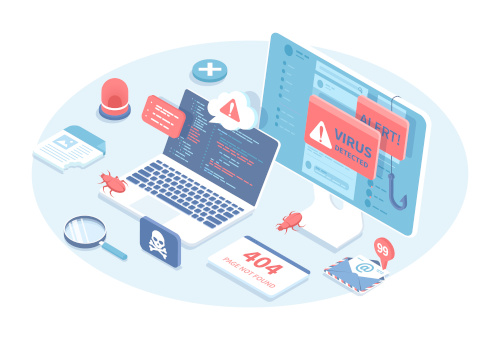Whether on or off a campus network, it’s crucial to activate a persistent connection to all your endpoints in order to provide unrivaled visibility and control. When institutions integrate these capabilities, they are then able to effectively geolocate, freeze, and wipe remote devices. From there, organizations can better plan, execute, collect, control, and monitor all remote devices.
Maintaining complete endpoint security requires a number of elements to be in place:
- For starters, the endpoint software should be embedded in the firmware of all devices, where it can’t be removed.
- Upon its activation, users should instantly have self-healing digital connection to all of their endpoints regardless of if they’re on or off an institution’s network.
- It is important to ensure inventory is an automatic process, where information can be fed from all endpoints. This should always remain efficiently up to date, without the need for any additional infrastructure.
- Beyond these capabilities, encryption and anti-malware monitoring should help to provide an even stronger barrier, restoring faulty safeguards remotely, without any human intervention needed.
Embracing Resilient Zero Trust
Given the growing threat of cyberattacks underscoring organizations’ abilities to depend on conventional perimeter-based defenses to protect critical systems, the Zero Trust approach has taken precedence. Under a Zero Trust approach, access to applications and data is denied by default. With the White House mandating federal compliance with zero-trust architecture by 2024, security and compliance are no longer mutually exclusive but rather, adopting a Zero-Trust security model is a necessity in order to remain compliant. Given the anticipated federal shift in policy across our nation in 2023, it is likely educational institutions will follow suit and implement their own Zero Trust requirements to ensure they remain resilient despite ongoing threats.
Solid network resilience is crucial to build on a platform of strong user verification as this is the most strategic means of preventing a breach of IT systems. More specifically, Resilient Zero Trust functions as a means of verifying users on a case-by-case basis, to assess, identify and alert of any suspicious behavior. When teams are notified of these threats in advance, they can freeze or shutdown potentially compromised entities to stop threat actors in their tracks. When this action is taken, this prevents hackers from moving laterally across a network, where they could cause even further damage to confidential records.
Ensuring Resilience for the Long-Haul
In today’s era of hybrid education, devices may travel with students and faculty across campus or even across the globe. Despite the benefits of staying connected, this new way of learning has created immediate concerns for information security; however, institutions shouldn’t remain fearful. So long as effective measures are in place, including reliable endpoints and resilient zero trust, there is no threat too big that can’t be contained.
- Are substitutes the answer to the teacher shortage? - June 13, 2023
- Preparing for ransomware attacks begins with education - June 13, 2023
- How to use UDL-inspired technology to reengage students - June 12, 2023

